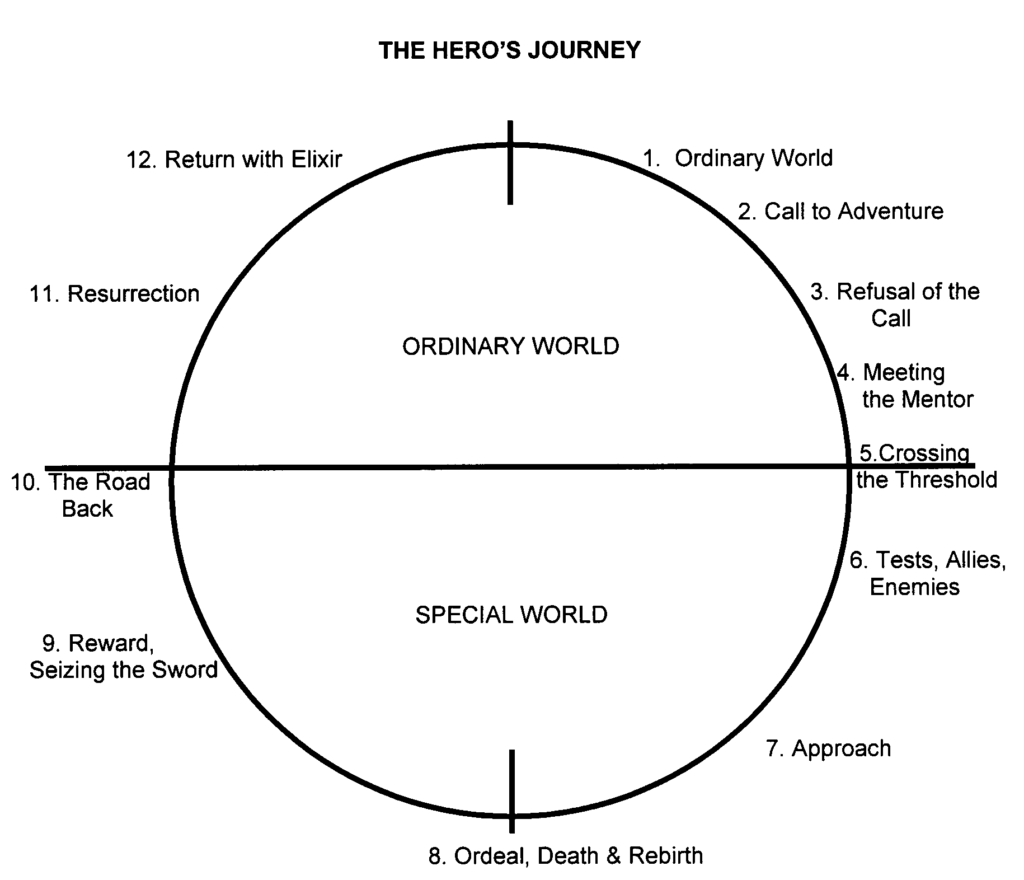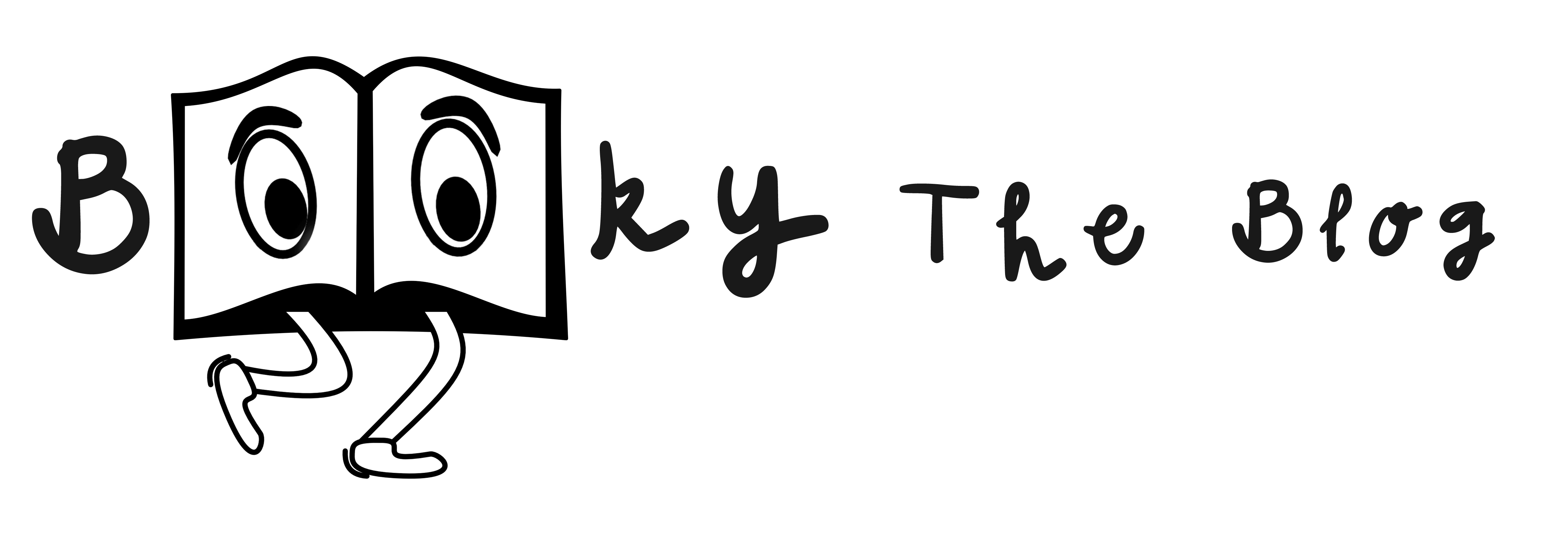How to write a good story?

How to write a good story? – To be or not to be?
Reading the books and tutorials about writing a good story you find often the same tips: make the characters interesting, make the story moving, write about the stuff you know etc. But not many know about a scheme that can help you creating an interesting story.
What is it?
You’ve probably noticed, especially in the movies, that most of the stories follow the same pattern. There’s an ordinary person that has to do something unusual, something bad happens, seems everything’s lost, but they find a solution and eventually win. Turns out most of the stories created by human beings are built over a certain scheme. Joseph Campbell has analized thousands of stories: from legends and myths, through dramas, to modern movies and novels. He described the typical adventure of the archetype known as The Hero, the person who goes out and achieves great deeds on behalf of the group, tribe, or civilization. He called this pattern the Hero’s Journey. Later Christopher Vogler continued his work and published a book ‘The Writer’s Journey’. There he describes with details the stages of the journey and the archetypes of characters.
There are 12 stages of this journey:
1. THE ORDINARY WORLD.
The hero, uneasy, uncomfortable or unaware, is introduced sympathetically so the audience can identify with the situation or dilemma. The hero is shown against a background of environment, heredity, and personal history. Some kind of polarity in the hero’s life is pulling in different directions and causing stress.
2. THE CALL TO ADVENTURE.
Something shakes up the situation, either from external pressures or from something rising up from deep within, so the hero must face the beginnings of change.
3. REFUSAL OF THE CALL.
The hero feels the fear of the unknown and tries to turn away from the adventure, however briefly. Alternately, another character may express the uncertainty and danger ahead.
4. MEETING WITH THE MENTOR.
The hero comes across a seasoned traveler of the worlds who gives him or her training, equipment, or advice that will help on the journey. Or the hero reaches within to a source of courage and wisdom.
5. CROSSING THE THRESHOLD.
At the end of Act One, the hero commits to leaving the Ordinary World and entering a new region or condition with unfamiliar rules and values.
6. TESTS, ALLIES AND ENEMIES.
The hero is tested and sorts out allegiances in the Special World.
7. APPROACH TO THE INMOST CAVE.
The hero and newfound allies prepare for the major challenge in the Special world.
8. THE ORDEAL.
Near the middle of the story, the hero enters a central space in the Special World and confronts death or faces his or her greatest fear. Out of the moment of death comes a new life.
9. THE REWARD (SEIZING THE SWORD).
The hero takes possession of the treasure won by facing death. There may be celebration, but there is also danger of losing the treasure again.
10. THE ROAD BACK.
About three-fourths of the way through the story, the hero is driven to complete the adventure, leaving the Special World to be sure the treasure is brought home. Often a chase scene signals the urgency and danger of the mission.
11. THE RESURRECTION.
At the climax, the hero is severely tested once more on the threshold of home. He or she is purified by a last sacrifice, another moment of death and rebirth, but on a higher and more complete level. By the hero’s action, the polarities that were in conflict at the beginning are finally resolved.
12. RETURN WITH THE ELIXIR.
The hero returns home or continues the journey, bearing some element of the treasure that has the power to transform the world as the hero has been transformed.

Archetypes
ARCHETYPES are recurring patterns of human behavior, symbolized by standard types of characters in movies and stories.
HEROES: Central figures in stories. Everyone is the hero of his or her own myth.
SHADOWS: Villains and enemies, perhaps the enemy within. The dark side of the Force, the repressed possibilities of the hero, his or her potential for evil. Can be other kinds of repression, such as repressed grief, anger, frustration or creativity that is dangerous if it doesn’t have an outlet.
MENTORS: The hero’s guide or guiding principles. Yoda, Merlin, a great coach or teacher.
HERALD: One who brings the Call to Adventure. Could be a person or an event.
THRESHOLD GUARDIANS: The forces that stand in the way at important turning points, including jealous enemies, professional gatekeepers, or your own fears and doubts.
SHAPESHIFTERS: In stories, creatures like vampires or werewolves who change shape. In life, the shapeshifter represents change. The way other people (or our perceptions of them) keep changing. The opposite sex, the way people can be two-faced.
TRICKSTERS: Clowns and mischief-makers, Bugs Bunny and Daffy Duck, Richard Pryor and Eddie Murphy. Our own mischievous subconscious, urging us to change.
ALLIES: Characters who help the hero through the change. Sidekicks, buddies, girlfriends who advise the hero through the transitions of life.
Why should you use it?
Many writers and screenwriters use this pattern, but not only. Even advertisements, talk shows or events are planned on its basis. If you pay attention, you’ll notice the stages in the movies you watch or the books you read. In theory each scene and each chapter should follow the patterns, being a part of the whole story also based on it. Sometimes some stages are missing, sometimes they appear in a different order, but this pattern works. It can help you create a story that will catch the attention of your reader.
Example: Star Wars: The New Hope
You might think that following this pattern will make inventing something new impossible. You’re wrong. One of the most innovative movies in the history of Cinema – the 4th part of Star Wars – is clearly based on this pattern. You don’t believe it? Let’s see.
- THE ORDINARY WORLD. Luke lives with his aunt and uncle.
- THE CALL TO ADVENTURE. The message from Princess Leia.
- REFUSAL OF THE CALL. Luke refuses to go to Alderaan.
- MEETING WITH THE MENTOR. Meeting with Ben and finding his family killed.
- CROSSING THE THRESHOLD. Luke decides to go with Ben.
- TESTS, ALLIES AND ENEMIES. Meeting Han Solo and escaping from Tatooine.
- APPROACH TO THE INMOST CAVE. Ben teaches Luke. They find out Alderaan has been destroyed.
- THE ORDEAL. The rescue of Princess Leia. The death of Ben.
- THE REWARD (SEIZING THE SWORD). Luke joins the rebel fleet that has always been his dream.
- THE ROAD BACK. Luke joins the offensive to destroy the Death Star. He refuses Han’s offer to go with him. (In this stage the hero usually start the journey back to his ordinary world. Luke does too, but he doesn’t go back to Tatooine, but he want to get back to the world without the Empire).
- THE RESURRECTION. Attack on the Death Star.
- RETURN WITH THE ELIXIR. Luke comes back to the rebellion. They survived. He receives a medal – he succeeded not only in destroying the Death Star, but also in leaving the farm and joining the fight for the Universe.
You see? So if you were having problems with planning your outline – this might be a solution for you.
The descriptions of stages and archetypes, and the image come from the official website: www.thewritersjourney.com. Some things I added from the book ‘The Writer’s Journey’.
